These symbols of Kwanzaa are used to represent various concepts of Kwanzaa and the Nguzo Saba. These are displayed during the seven-day ceremony held between December 26 and January 1 of every year.
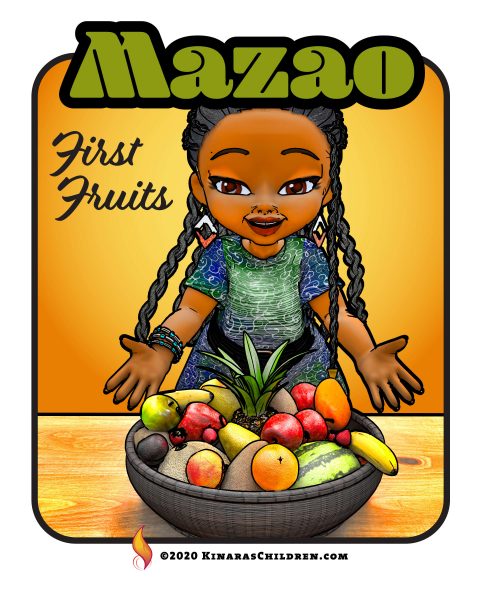
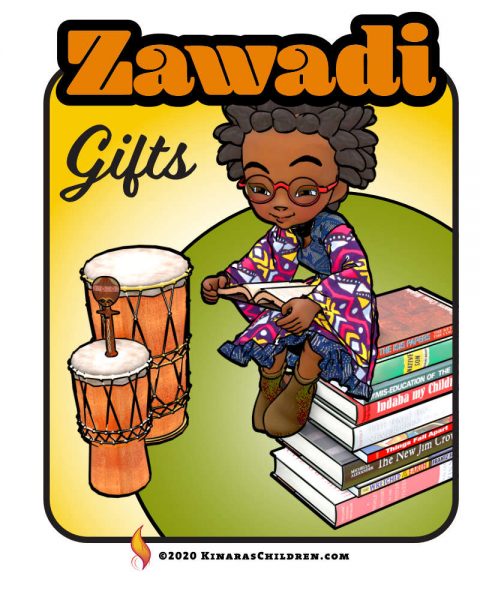
ZAWADI
Kuji is seen with Zawadi (Zah-WAH-dee), gifts, preferably hand made and African influenced. These are presented to children to help them keep their promises to themselves and to their people.
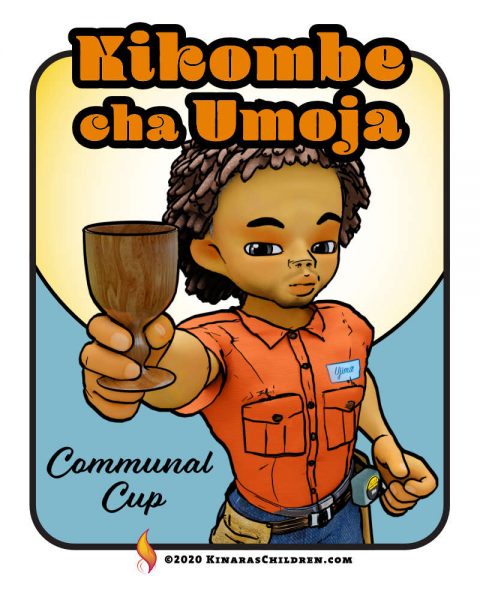
KIKOMBE CHA UMOJA
Ujima is holding the Kikombe Cha Umoja (kee-KOM-bay CHA oo-MOH-jah), a communal cup used for libation. We use fruit juice rather than an alcoholic beverage for Kwanzaa.
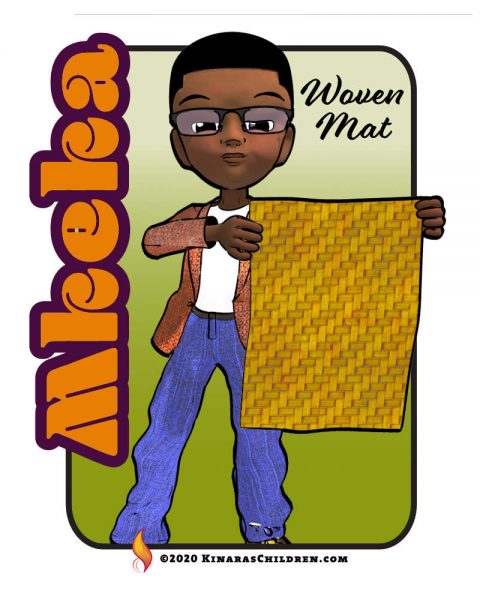
MKEKE
Ujamaa is holding the Mkeka (mm-KAY-Kah), a straw mat that represents our reverence for tradition. The Kinara is typically placed on the Mkeka as part of our Kwanzaa display.
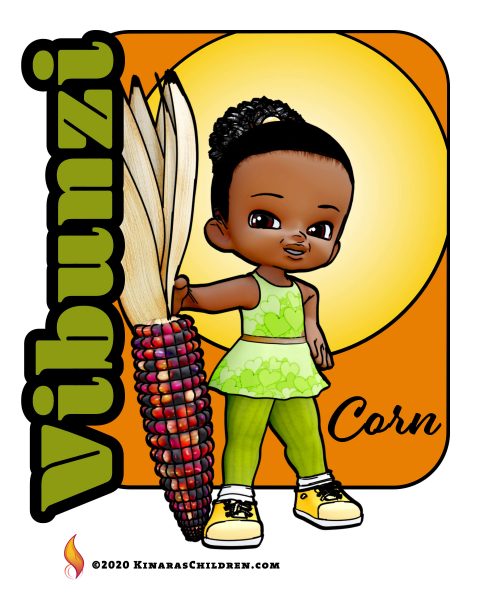
VIBUNZI
Nia shows off her Vibunzi (vee-BOON-zee), an ear of corn representing the children and their future. One ear is set out for each child in the family. Families without children should set out one to represent the children in the community. Vibunzi is also called Muhindi.
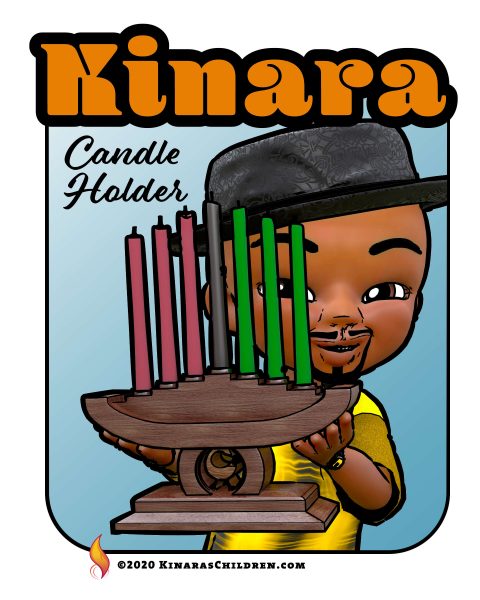
KINARA
Kuumba holds the Kinara (Kee-NAH-rah), a seven-branched candleholder which represents our roots, Africa and her people.
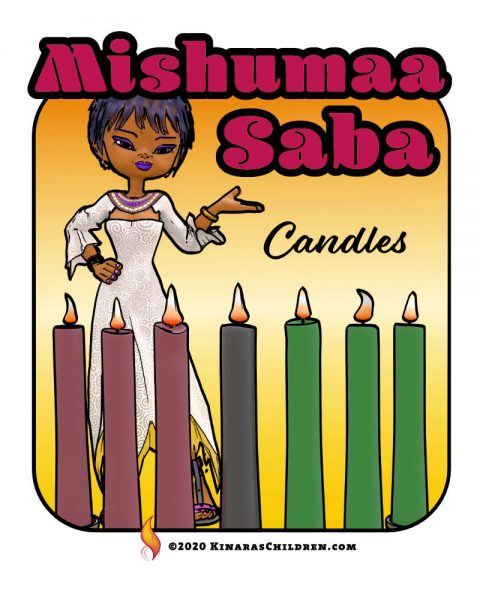
MISHUMAA SABA
Imani displays the Mishumaa Saba (mee-SHOO-mah SAH-bah), the seven candles representing the 7 principles of the Nguzo Saba.